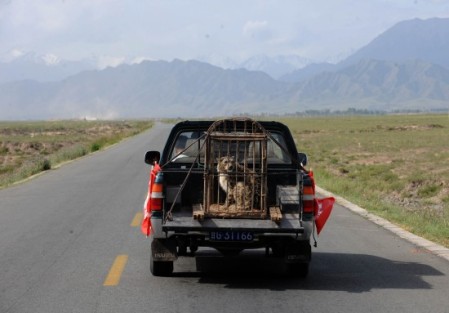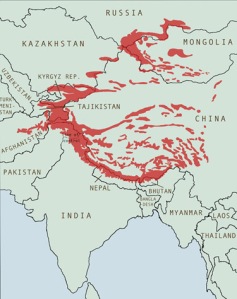 The Environmental Investigation Agency (EIA) recently conducted undercover investigations into the illegal big cat skin and bone trade in China and found it easy to get tiger, snow leopard and other leopard skins.
The Environmental Investigation Agency (EIA) recently conducted undercover investigations into the illegal big cat skin and bone trade in China and found it easy to get tiger, snow leopard and other leopard skins.
‘China has really run out of excuses. They tell us they are doing their best, but we have been warning them about this for years and there are still huge gaps in their enforcement effort. If they can put a man into space, they can do more to save the wild tiger’, said Debbie Banks, Lead Campaigner at the Environmental Investigation Agency.
The EIA team did three weeks of undecover work during July and August this year and captured the illegal trade on film using a hidden camera while they enquired about animal skins on sale. During this time they were offered 11 snow leopard skins as well as many other cat parts. In a sad video the sellers show skins from Nepal, Mongolia, Pakistan and Afghanistan. “We can get you anything you want,” they say.
While buying and selling any big cat parts is definitely illegal in China it seems a lot of this activity is actually not too difficult to find in many parts of China including Tibet. Researchers found local officials in the vicinity of the shops trading the illegal goods and people at a horse festival in Tibet openly wearing skins in view of local authorities.
The EIA believes that the skins are less in demand from Tibetans themselves these days – perhaps the plea from the Dalai Lama in 2006 for Tibetans to stop wearing skins of endangered animals has worked. But demand from middle class and wealthy Chinese business people, army personell and government officials has not dropped. The skins are bought for home décor or clothing in Tibet and China, costing huge amounts of money that more people can now afford. A snow leopard skins costs around $US2200.
According to the EIA the illegal trade is organised by extensive criminal networks. ‘There is some law enforcement in China, in a few regions, but there are whole swathes of the country where this trade is allowed to carry on with almost no fear of detection. A mixture of corruption and apathy is helping to decimate endangered species and is indicative of what is happening to the wider environment,’ said Alasdair Cameron of EIA.
The EIA has provided the Chinese government with this sort of evidence for over 5 years but there appears so much localised corruption that little has changed.
The Environmental Investigation Agency is a UK-based Non Government Organisation that investigates and campaigns against environmental crime including illegal wildlife trade.
See BBC story and video here.
 See interview with Debbie Banks from India Today TV.
See interview with Debbie Banks from India Today TV.
 BBC News has reported the following story. “Two herdsmen have been sentenced to eight and 10 years in prison for killing a snow leopard in northwest China’s Xinjiang region.
BBC News has reported the following story. “Two herdsmen have been sentenced to eight and 10 years in prison for killing a snow leopard in northwest China’s Xinjiang region.


 Posted by Sibylle and Rex
Posted by Sibylle and Rex  The Environmental Investigation Agency (EIA) recently conducted undercover investigations into the illegal big cat skin and bone trade in China and found it easy to get tiger, snow leopard and other leopard skins.
The Environmental Investigation Agency (EIA) recently conducted undercover investigations into the illegal big cat skin and bone trade in China and found it easy to get tiger, snow leopard and other leopard skins. See
See 










